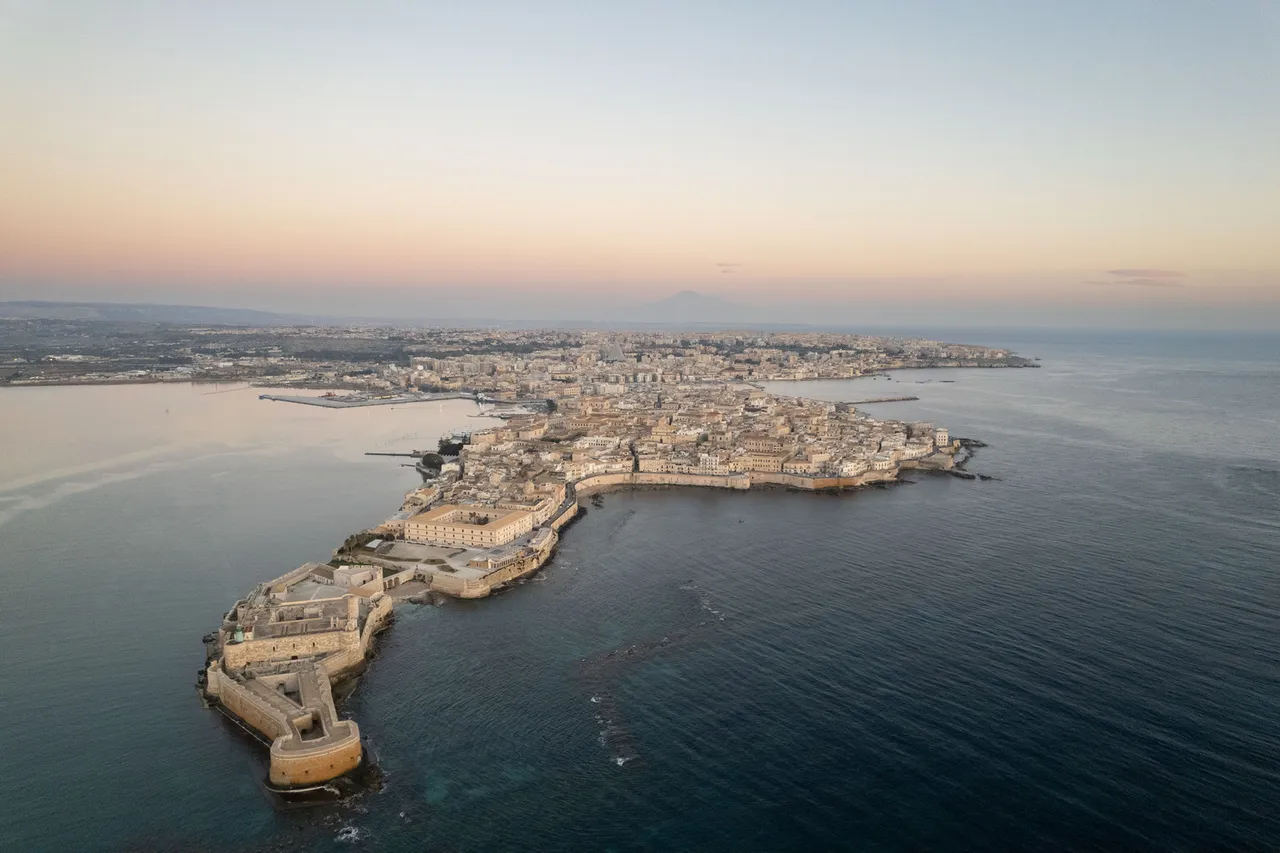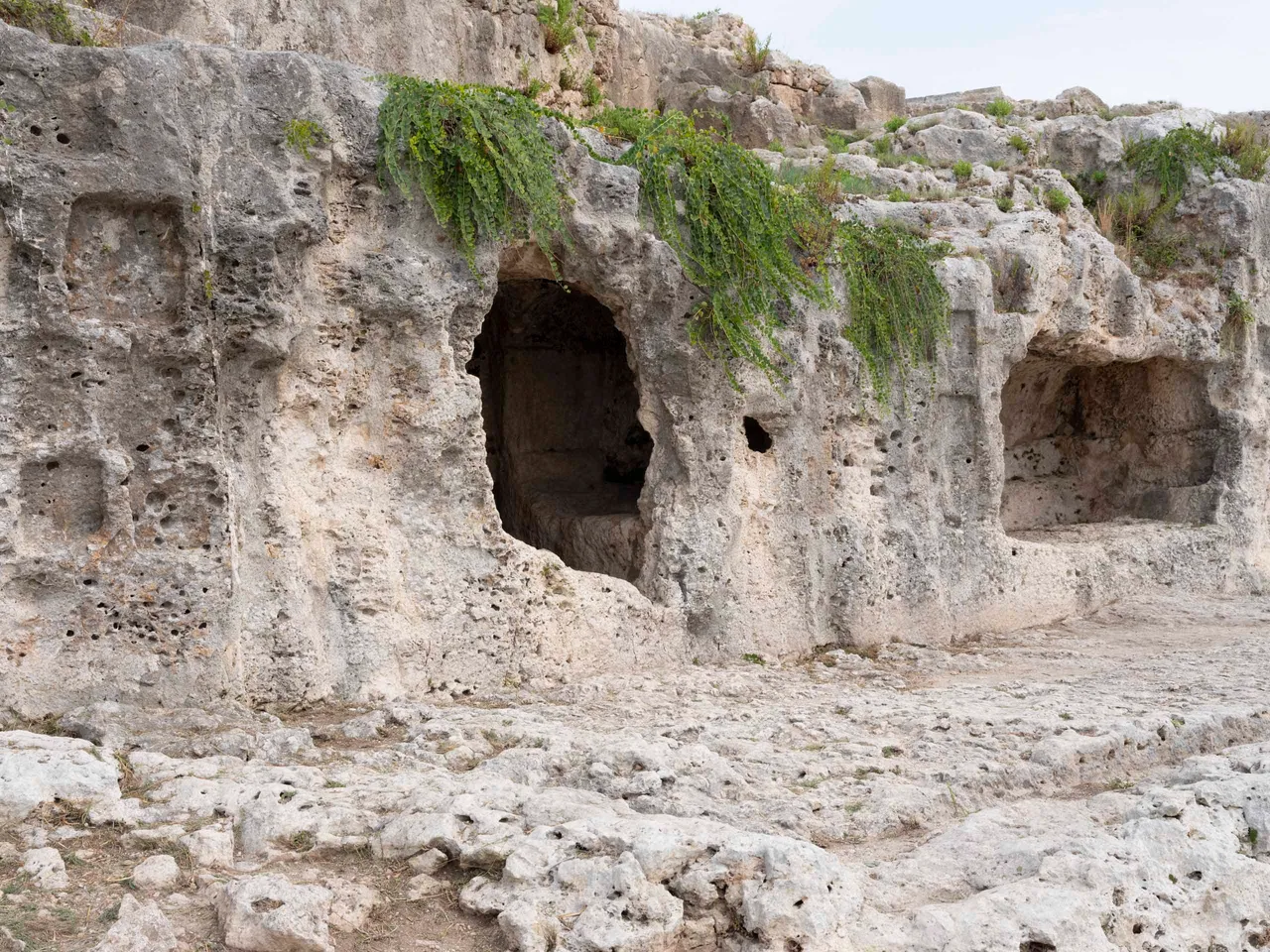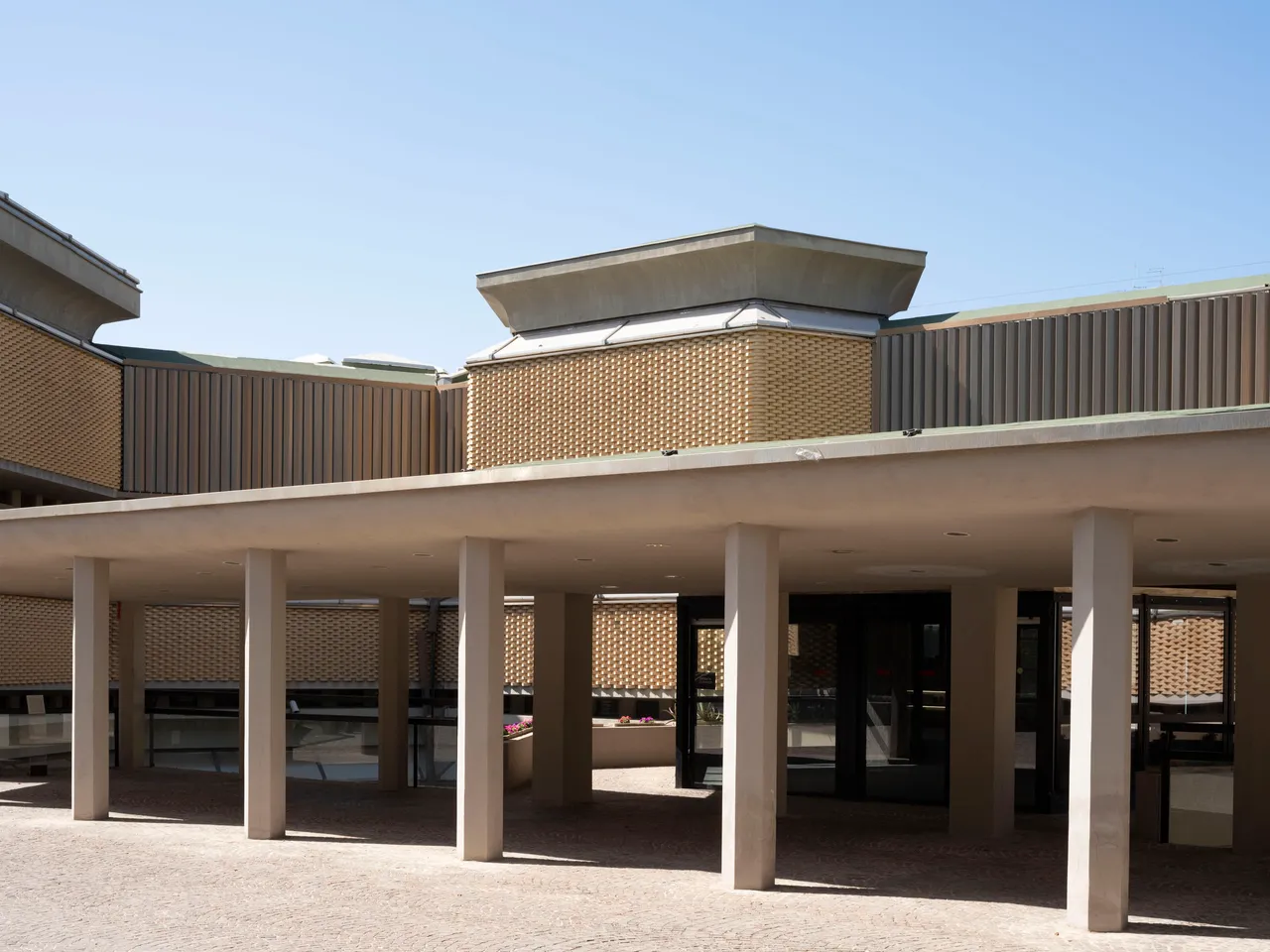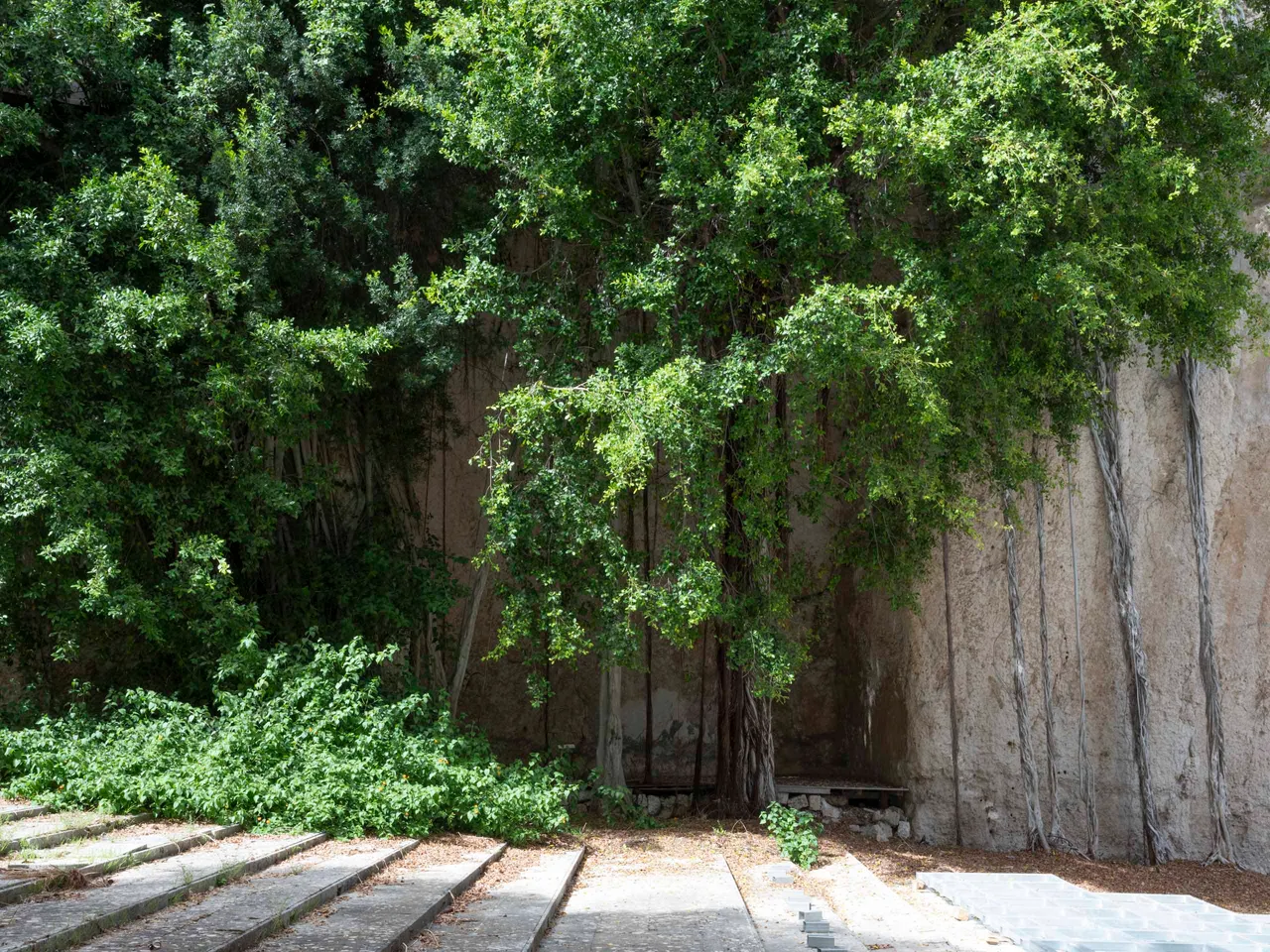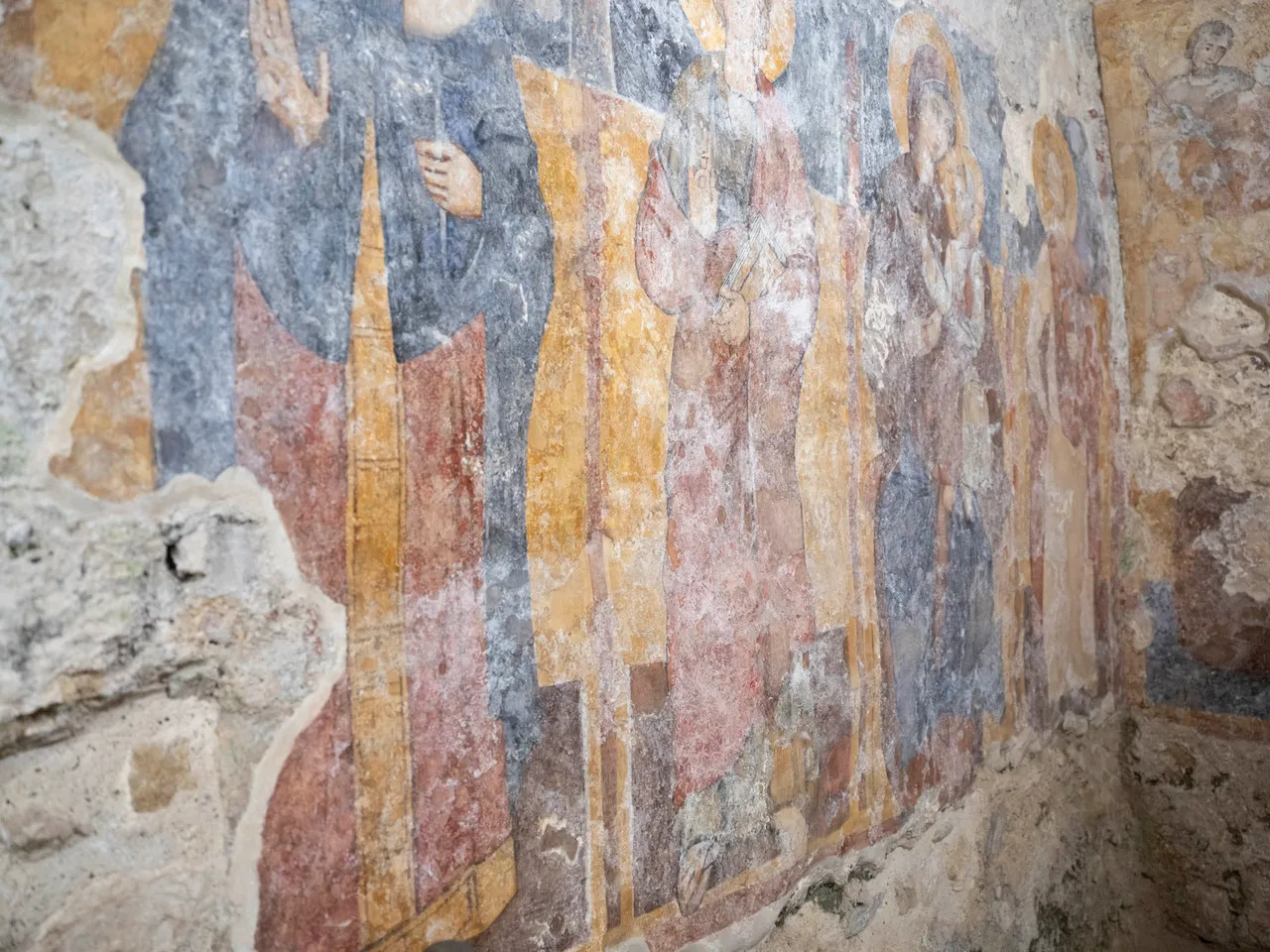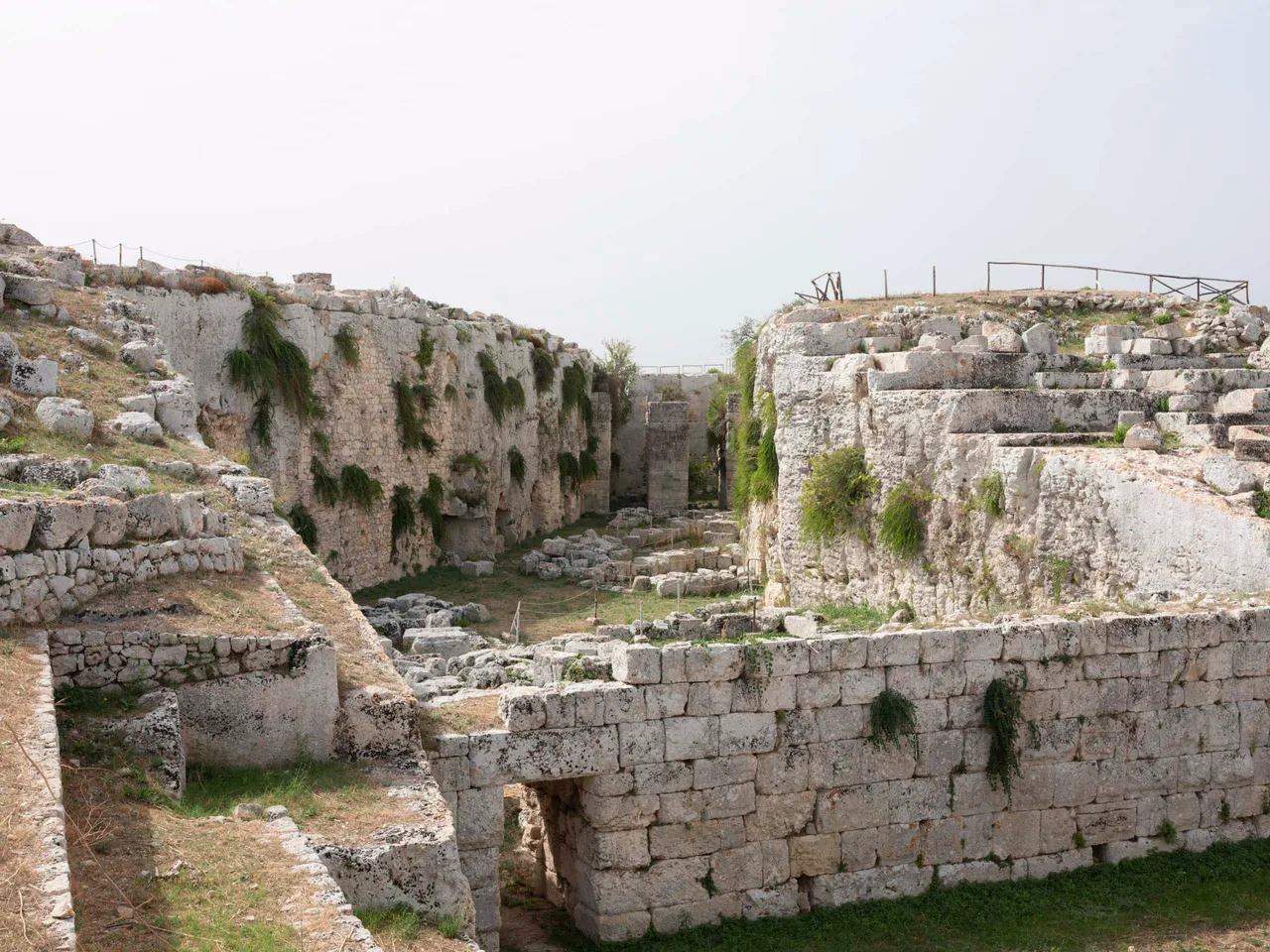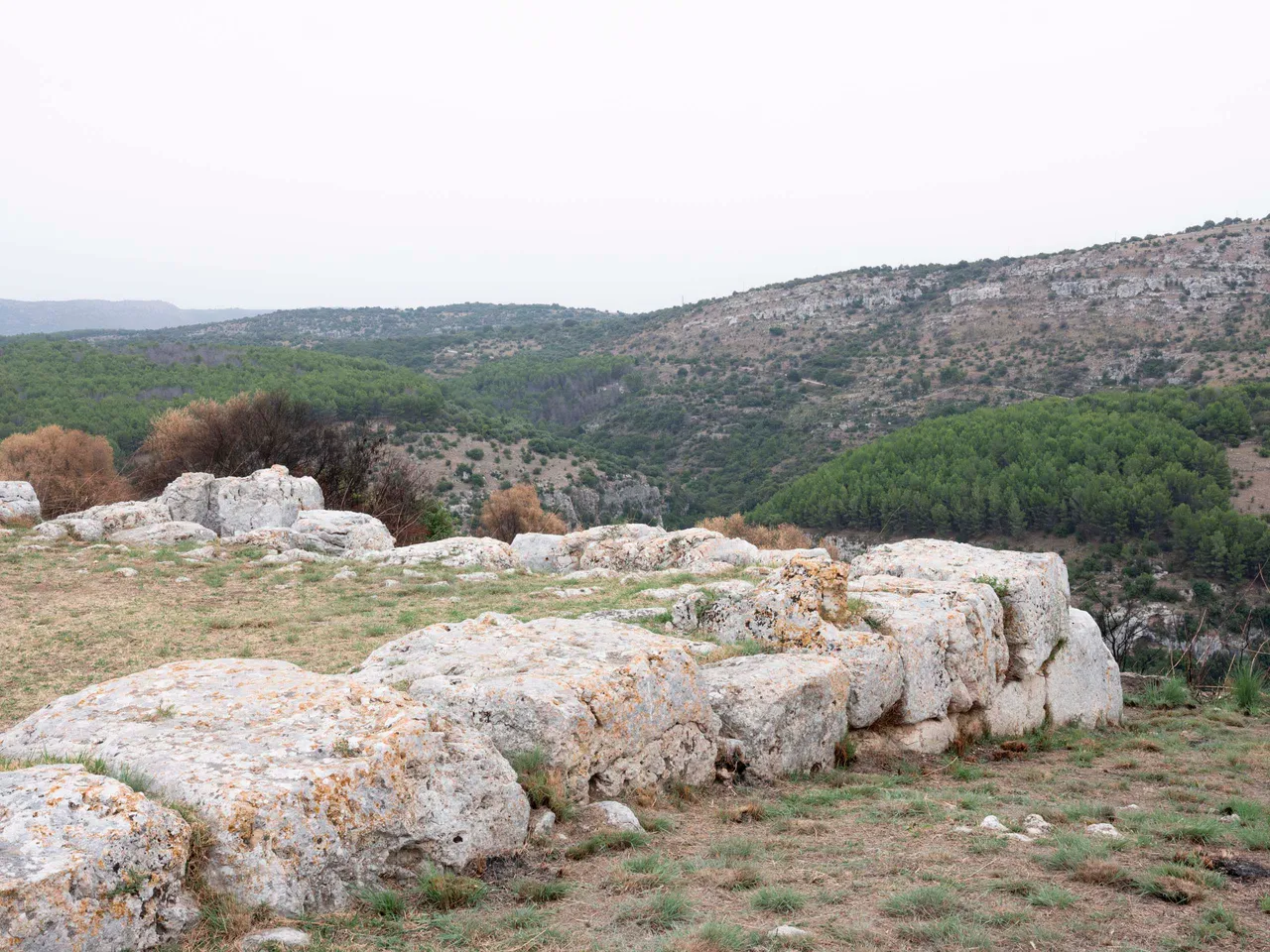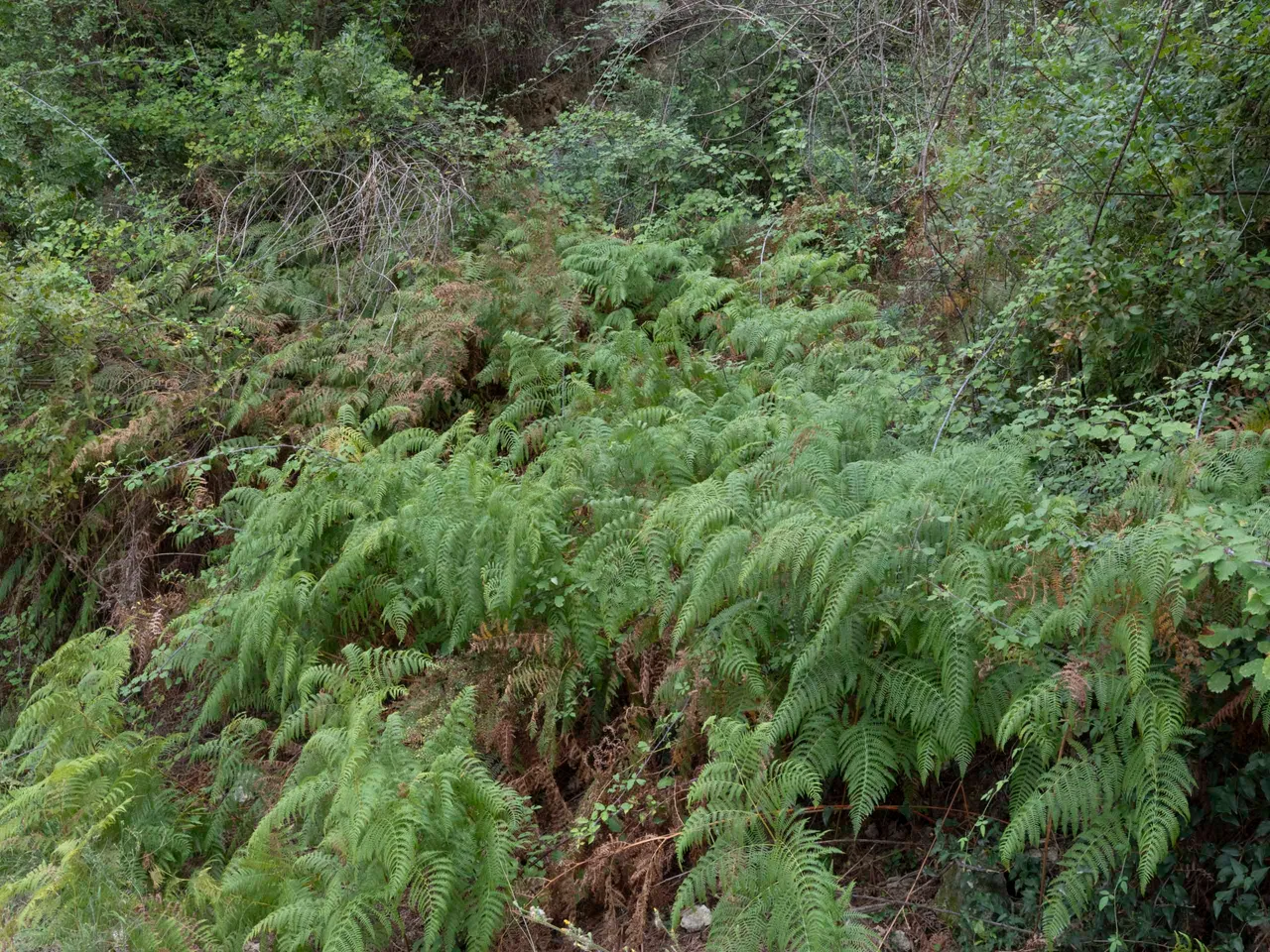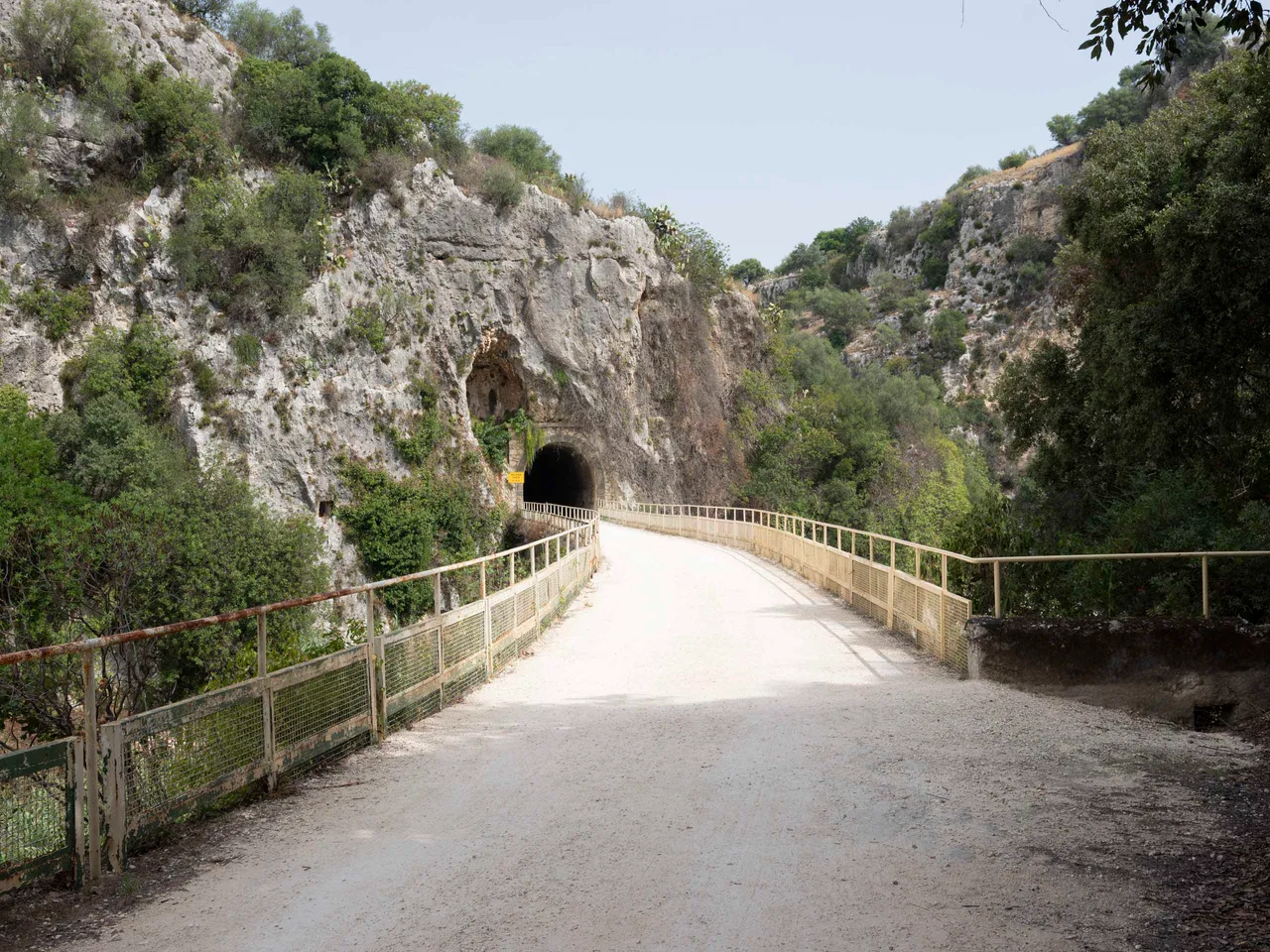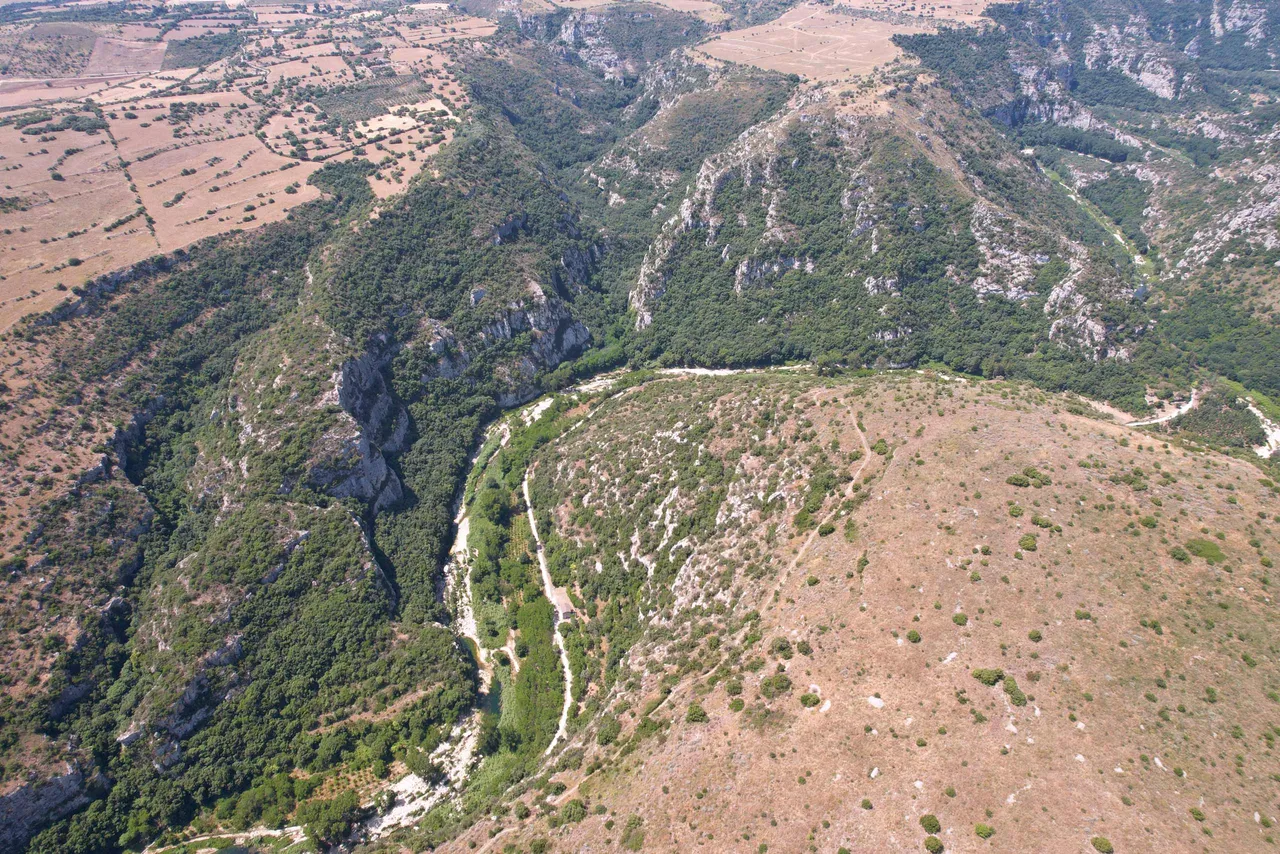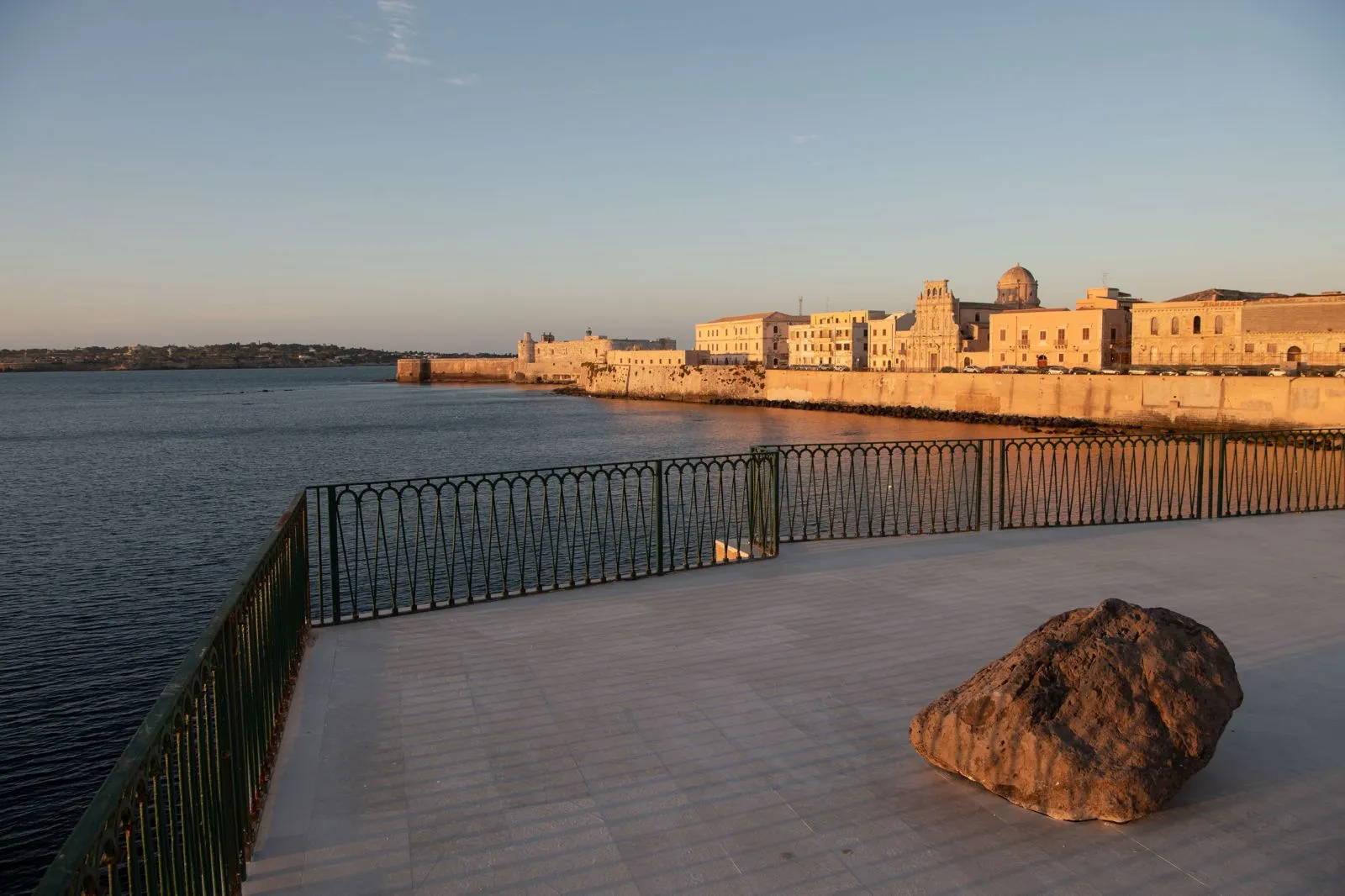The Sella di Filiporto hosts a defensive structure in the form of a long trench carved into the rock, approximately 113 meters long, 4 to 5.6 meters wide, and with depths ranging from 1.5 to 3 meters. This trench, which cuts across the saddle, served as a significant defensive barrier controlling access to the Anaktoron plateau. Dating this structure is challenging due to the presence of overlaid Byzantine constructions. Archaeologist Bernabò Brea suggests that the fortification might be linked to the Syracusans’ defensive efforts during the Athenian siege of 416–413 BCE.
During the Byzantine period, Pantalica hosted rock-cut settlements, with dwellings often located in caves previously used as tombs. These settlements also included small oratories and sanctuaries, which were essential to the community's religious life. An example of such structures is the small church of San Micidiario, located on the southern slope of the Sella di Filiporto. The church features a tri-apsidal plan, with a semicircular apse and two side niches, likely used as altars. Its pictorial decoration, though damaged, is simple: a Christ Pantocrator and figures of angels can still be identified.
Another, smaller Byzantine village is found on the southern slope of the plateau around the small church of San Nicolicchio, which has a similar layout and wall paintings depicting saints. Byzantine dwellings were organized into clusters, connected by rock-hewn paths that linked homes and provided access to viewpoints and quarries. This type of settlement reflected the Byzantines' adaptation to the rugged geography of the area. A small treasure of gold coins and jewelry discovered near the Anaktoron, dated to the late 7th century CE, suggests that the Pantalica community was in decline due to Arab invasions, which would become a significant threat in the coming centuries. The need to hide such valuable items indicates an imminent danger facing the community.
There is no precise documentation of life in Pantalica during Muslim rule, but in 1092, a resistance by inhabitants of Muslim origin against the Normans is noted, indicating that a settlement still existed. The settlement ended with the Norman conquest, which involved violent repression of the surviving Arabs, marking the definitive end of human habitation in Pantalica.
